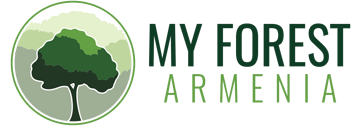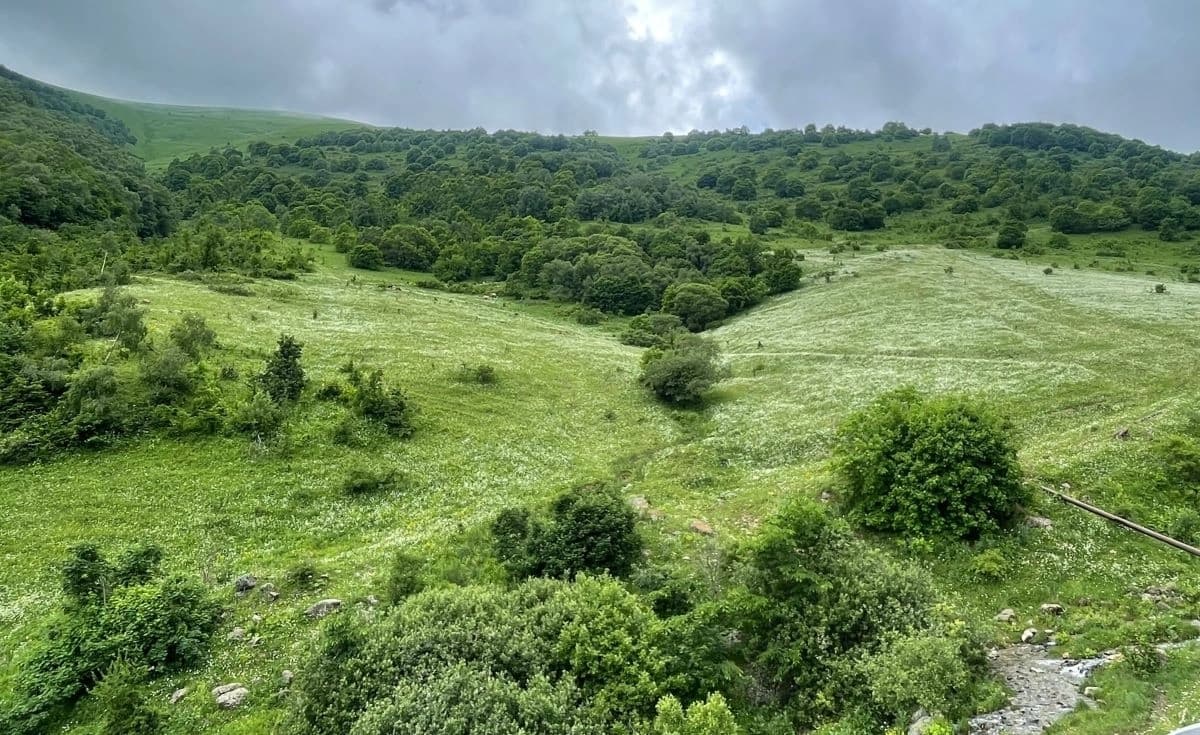Each type is an individual In the forest each species, carrying unique genetic characteristics, is regarded as an irreplaceable personality. Each species represents a unique value, as there are no "valuables" and "worthless" as declared by humans.
A rational man is still one member of the animal world, albeit with a special status, and occupies only a single shelf in the library of millions of species of living nature. However, the living world is not a library in which one book or many of them can be preserved in case of fire, flood, or earthquake. Every species in the forest is directly or indirectly connected by thousands of threads - not only to those that are adjacent but also to distant ones.
This interconnectedness ensures the efficient functioning and stability of the forest ecosystem.
In Armenia, the forest-dwelling bird, thrush (and not only) feeds on red, apple-like berries of mountain ash in winter. The pulp is digested and the seeds fall with the excrement quite a distance from the mother tree, and after passing through the bird's digestive system and undergoing "pre-seed processing", they easily germinate, while receiving a certain supply of nutrients for the first year of growth.
One may wonder whether foxes have anything to do with the process of reforestation or natural afforestation. Yet, 70% of the diet of foxes is mice, and mice feed on acorns, beechnuts or other nuts providing natural regrowth of the forest.
In the forest, " water reservoirs" accumulated from rainwater in the foliage of trees, in the cracks and hollows of trunks and branches, are a living shelter for mosquito larvae, which are eaten by bugs, which in turn are food for various birds.
A forest is not merely a vast assembly of tree species
Almost all biological species depend on forests. Plants and animals form a single network, a system, or a family, whose members interact harmoniously with each other so that the whole system works smoothly and continuously, and can create a safe and stable system for itself and other living beings, including outside the forest.
Thanks to the huge number of species, it is possible to obtain clean water, restore oxygen reserves, maintain soil fertility, obtain food and medicines.
Human Influence
Modern humanity’s goal of economic development at any cost leads to a dead end. The destruction of forests leads to the destruction of man himself. One extinct species becomes the beginning of a chain of irreversible consequences. It is pointless to protect a species if its habitat is not protected. Destroy or alter that environment and the species will inevitably go extinct. Forests, meadows, lakes and rivers must be preserved.
By going against forests and against nature in general, we are undermining and destroying the very foundation of our existence.
The reflections of the Russian scientist A. Chivevsky are instructive.
"Biodiversity can be compared to the wooden house we live in. Most of us do not take care of our houses. Quite the contrary, we are dismantling our home without thinking about the consequences. We start tearing a plank from one part of the house, then another one from another part, and so on, and we load them one by one in the stove to keep warm.
And since the house is large, for a while our actions do not produce any tangible changes. However, gradually moving to the floorboards, doors, and windows of our house, holes and gaps appear in the walls of our house, from which the cold creeps in. The more we light the stove, the more difficult it becomes to maintain the heat. Fuel is constantly required, and the house gets colder and colder.
It is very bad that we do not have a good idea of how our own house will be built; we break and smash everything that cannot be restored. In the end, it is possible that one day our entire structure, deprived of its foundation, will collapse on us.”
Our house is still standing, and it still has enough planks, windows, and doors. However, to prevent its collapse and ensure its survival, we need to strengthen our home by maintaining and growing our forests and helping native tree species become a strong foundation for future forest biodiversity.

